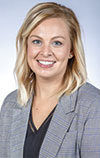While an ideal calving season length varies between operations, a controlled calving season is defined as a 45- to 80-day calving window, allowing cows two to four opportunities to conceive during the breeding season.
Females that calve early in the season year after year provide greater profit potential compared to females who calve later in the season. By narrowing the calving season and selling females that consistently calve on the tail end of the calving season, you are directly selecting for increased fertility and profit potential.
Depending on your herd size, you might have multiple groups you are willing to calve at different times, such as first-calf heifers and mature cows or purebred females and commercial females. However, a defined calving window, regardless of group or herd size, is important to capitalize on the following benefits.
The shorter the calving season, the greater the likelihood all females will be at the same stage of the breeding cycle. This simplifies pre-breeding vaccinations and synchronization programs.
Likewise, cows grouped tighter in stage of production means nutrient requirements are more similar and should simplify nutritional management. Keep in mind, thinner mature cows and first-calf heifers have different requirements than mature cows in adequate body condition.
A defined calving season also means decreased risk for calf morbidity and mortality. Late-born calves are often exposed to contaminated environments that contain disease and pathogens shed by older calves even under high-biosecurity management.
Managing a tight calving season also increases the likelihood of supplying a more uniform group of calves to meet market demands. Less variation in calf age and weaning weights are not only beneficial for timing of pre-weaning vaccinations, but also marketing of calves.
Having a controlled calving season really starts during the breeding season and requires diligence to pull the bull or pregnancy check cows and sell females that failed to conceive within your pre-defined calving window. As you go through this calving season, consider the implications of your current calving window and whether improvements could be made. ![]()

-
Erika Lundy
- Extension Beef Program Specialist
- Iowa Beef Center - Iowa State University
- Email Erika Lundy











